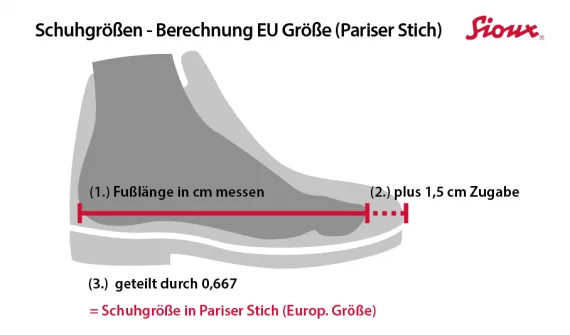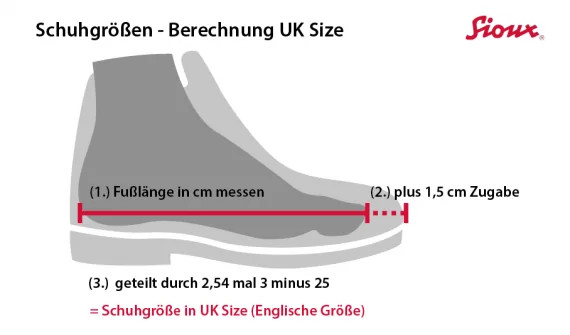Navigating the world of shoe sizes can often feel like deciphering a secret code, especially when encountering systems from different regions. While UK and US shoe sizes are commonly understood in some parts of the world, mainland Europe primarily utilizes the Paris Point system. This guide aims to demystify Euro Foot Sizing, also known as European shoe sizing, providing you with a comprehensive understanding of this system and how it compares to others. Whether you’re shopping online or traveling abroad, mastering euro foot sizing will ensure you always find the perfect fit.
The Paris Point System: Origin and Basics of Euro Foot Sizing
The foundation of euro foot sizing lies in the “Paris point,” a standardized measurement established in France during the mid-19th century. This system, rooted in the metric system, has since become the standard across Europe, excluding the UK. You might encounter euro foot sizing referred to as “French size,” “European size,” “EU shoe size,” or even “German size,” all pointing back to the same Paris Point system.
Intriguingly, the Paris point system’s origins are linked to the humble sewing machine. The unit of measurement, the Paris point, is believed to be derived from the original stitch length of double seams on early sewing machines. One Paris point is equivalent to two-thirds of a centimeter, or approximately 6.67 millimeters.
The euro foot sizing system encompasses a wide range of sizes, starting from children’s size 15, corresponding to an inner shoe length of 10 centimeters, and extending up to men’s size 50, reaching 33.3 centimeters. This unified system for both children and adults sets it apart from the UK and US systems, which differentiate more distinctly between these categories.
A characteristic of euro foot sizing is the limited availability of half sizes. Shoes manufactured using this system typically increment in full sizes, meaning the difference between each consecutive size is consistently 6.67 mm.
Calculating Your Euro Shoe Size:
The formula for determining your euro foot size is based on the last length of the shoe, which is slightly longer than your actual foot length to accommodate movement and comfort.
Euro Shoe Size Calculation: (Last length in cm = Foot length + 1.5 cm) / 0.667
The additional 1.5 cm, often referred to as “toe room,” is crucial. When walking, your foot naturally slides forward inside the shoe, and this extra space prevents your toes from hitting the front, ensuring comfort and preventing injury. Therefore, when measuring your foot to find your euro foot size, always add 1.5 cm to your foot length before applying the formula or consulting a euro foot sizing chart.
You can easily identify euro foot sizing on shoe labels, often indicated by the abbreviation “EU,” standing for European Union. This designation distinguishes it from UK and US sizing systems.
 EU Size Chart Example
EU Size Chart Example
The UK System: Barleycorn and Imperial Measurements
In contrast to the metric-based euro foot sizing, the UK shoe size system employs imperial measurements, rooted in history and tradition. It holds the distinction of being the oldest official shoe size system globally. Instead of centimeters, the UK system relies on inches and a unit called the “barleycorn.”
Historically, people relied on natural dimensions for measurement due to the scarcity and expense of measuring instruments. In 1324, King Edward II of England formalized a standard based on the barleycorn, a dried grain of barley, defining it as the smallest unit of measure. He decreed that three barleycorns placed end-to-end equaled one inch. For context, one inch is precisely 2.54 centimeters in the metric system. In the absence of barleycorns, the width of a thumb, roughly equivalent to three barleycorns or 2.5 cm, also served as a practical measurement.
Even today, the term “barleycorn” persists in the UK system, with 1/3 of an inch (approximately 8.46 mm) retaining this historical name. This barleycorn measurement forms the basis of UK shoe sizes. Each full UK shoe size is one barleycorn (8.46 mm) longer than the preceding size. To refine fitting further, half sizes, equivalent to 4.23 mm increments, were introduced around 1880.
Unlike the uniform euro foot sizing system, the UK system differentiates between adult and child sizes, adding a layer of complexity.
UK child sizes begin at the smallest practical shoe length, designated as UK child size 0, which corresponds to 12 barleycorns or 10.16 cm of interior shoe length. The progression continues to child size 13½, followed by the transition to adult sizes, starting again at adult size 0. The largest UK men’s size typically reaches size 14 (approximately 33 cm).
Calculating Your UK Shoe Size (Adult):
UK Shoe Size Calculation (Adult): (Last length in cm = Foot length + 1.5 cm) / 2.54 / 3 – 25
Alternatively, using inches:
UK Shoe Size Calculation (Adult): (Last length in inches) x 3 – 25
 UK Size Chart Example
UK Size Chart Example
When multiple shoe sizes are listed on a label, “UK” typically denotes the United Kingdom size. It’s important to remember that UK sizing differs from the US system.
The US System: A UK Derivative with Variations
The US shoe size system emerged in the mid-19th century, drawing inspiration from the UK system but introducing key modifications. While rooted in the UK system, the US system’s scale begins at 3 11/12 inches, instead of the UK’s starting point of 4 inches for child size 0. Notably, US child size 0 aligns with Paris Point size 15, bridging the two systems at the lower end of the scale.
Similar to the UK system, the US system incorporates half sizes, maintaining the same 4.233 mm increment between sizes.
Calculating Your US Shoe Size (Men’s):
US Shoe Size Calculation (Men’s): (Last length in cm = Foot length + 1.5 cm) / 2.54 / 3 – 24
Or, in inches:
US Shoe Size Calculation (Men’s): (Last length in inches) x 3 – 24
It’s crucial to note a distinction for women’s US sizes. The calculation formula differs slightly, subtracting 23 instead of 24:
US Shoe Size Calculation (Women’s): (Last length in inches) x 3 – 23
Despite these subtle differences in calculation, the US and UK systems exhibit a relatively consistent relationship. For men’s sizes, the US size is typically two sizes larger than the corresponding UK size. For example, a US men’s size 10 is equivalent to a UK size 8, which in turn corresponds to a euro foot sizing of 42. The difference is smaller for women’s sizes, with a US women’s size 5 being roughly equivalent to a UK size 4.
Interestingly, US shoe sizes are frequently used for athletic shoes or trainers sold in Europe, including Germany. However, it’s important to remember that trainers often run smaller than typical outdoor shoes. Therefore, when purchasing trainers, it’s advisable to go up by 1.5 UK/US sizes or 2.5 euro foot sizing compared to your regular shoe size.
When multiple sizes are displayed, “US” usually indicates the United States size. The coexistence of these systems can indeed be confusing, highlighting the value of understanding euro foot sizing as a consistent European standard and utilizing conversion charts when necessary.
Oversized and Undersized Shoes: Expanding Size Ranges
Standard adult shoe sizes, following European industry norms, typically range from UK women’s size 3.5 (EU 36) to 8.0 (EU 42) and UK men’s size 6.5 (EUR 40) to UK 12 (EU 45).
However, some manufacturers, like Sioux, extend these ranges to accommodate individuals with larger feet, offering men’s shoes up to UK size 15 (EU 50 1/2) and women’s shoes up to UK size 10.5 (EU 45).
Sizes exceeding these standard adult ranges are often categorized as “outsizes” or “large sizes.” Many online retailers feature dedicated sections for these sizes to facilitate easier browsing for customers seeking larger footwear.
Conversely, shoe sizes smaller than the industry standard are termed “sub-sizes” or “small sizes.”
Choosing the Right Size Online: Practical Tips for Euro Foot Sizing and Beyond
Online shoe shopping offers convenience, but selecting the correct size, especially when dealing with unfamiliar systems like euro foot sizing, is crucial to avoid returns and ensure satisfaction. Here are practical tips to help you choose the right shoe size when shopping online:
-
Measure Your Feet: Accurately measure your foot length in centimeters. Do this by placing your heel against a wall and measuring to the tip of your longest toe. Remember to measure both feet, as sizes can vary slightly. Add the 1.5 cm allowance for toe room to your measurement. This measurement in centimeters is your key to finding your euro foot sizing.
-
Consult Size Charts: Reputable online shoe retailers usually provide size charts that correlate foot length to different sizing systems, including euro foot sizing, UK, and US sizes. Locate the size chart specific to the brand or website you are using and match your foot length to the corresponding euro foot sizing.
-
Compare with Existing Shoes (Carefully): If you have comfortable outdoor shoes (not trainers) at home, check their size labels. If you have multiple pairs of similar outdoor shoes that fit well and are the same size, this size can serve as a reliable reference point. However, be cautious when comparing across shoe types.
-
Avoid Trainer Comparisons for Regular Shoes: Trainers often use US sizing and tend to fit smaller than regular outdoor shoes. Do not use your trainer size as a guide when buying dress shoes, boots, or other non-athletic footwear. If you are buying trainers, be aware you may need to increase by 1.5 UK/US sizes or 2.5 euro foot sizing.
-
Consider Half Sizes and Width: If your measurements fall between sizes, or if you know you often need half sizes, and they are available, opt for the half size. Also, consider shoe width if available, as fit involves both length and width.
-
Read Product Descriptions and Reviews: Pay attention to product descriptions, which may contain sizing notes specific to the shoe model. Customer reviews can also offer valuable insights into whether a particular shoe runs true to size, large, or small.
-
When in Doubt, Order Two Sizes (If Return Policy Allows): If you are uncertain and the retailer has a good return policy, consider ordering two sizes and returning the pair that doesn’t fit. This is particularly helpful when trying a new brand or shoe style.
Ultimately, the best way to ensure a perfect fit is to try shoes on in person at a physical store. This allows you to assess not just the size but also the shoe’s width, last, and overall comfort. These factors significantly impact how a shoe feels on your foot.
Find out here how to measure your shoe width.
Disclaimer: Shoe sizes can vary slightly between manufacturers and even different models from the same manufacturer. While size conversion charts are helpful, they are approximations. Always prioritize trying shoes on whenever possible. Be particularly mindful that shoe size calculators and charts may not be accurate for trainers due to their unique construction and sizing. While we strive for accuracy in our shoe size information, we cannot guarantee complete comprehensiveness or accuracy. We appreciate your understanding.
